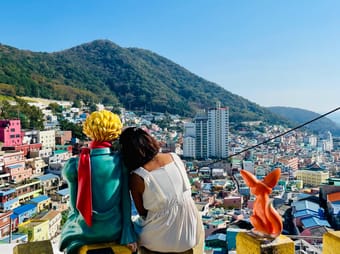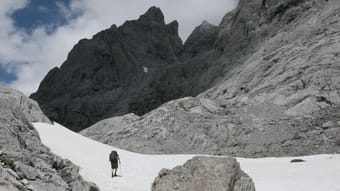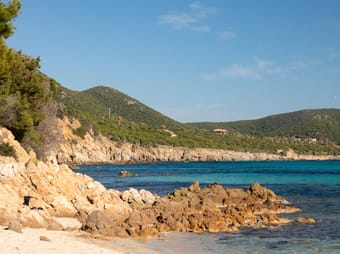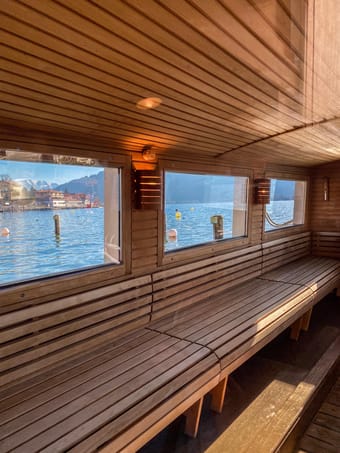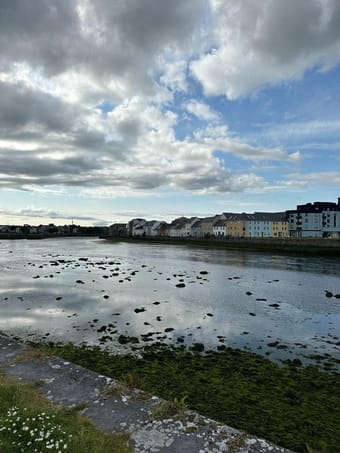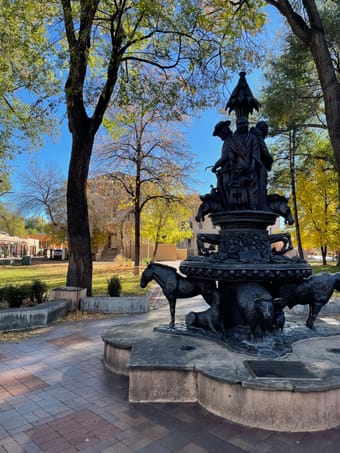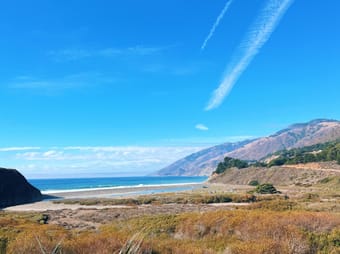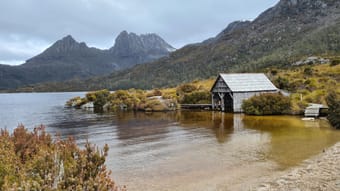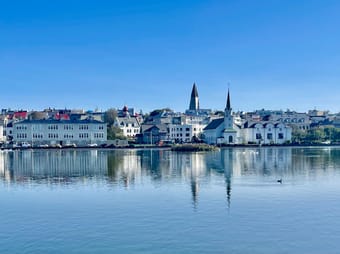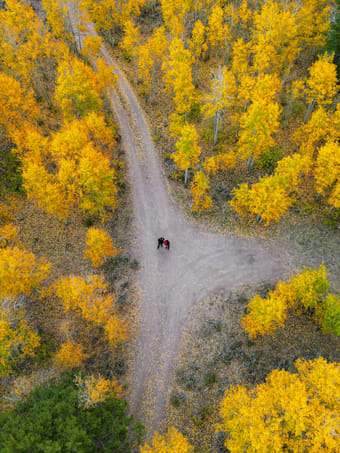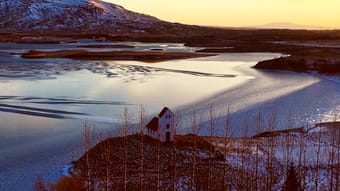Results for Bar Nature
When visiting South Korea, Seoul is often the first, and perhaps only, stop on the itinerary—and understandably so.
Despite being the country's second-largest city and a bustling metropolis in its own right, Busan doesn't always receive as much attention from tourists.
However, if you're seeking a nature-filled experience, the refreshing sea breeze, interactions with locals, and a deeper dive into South Korea's cultural side, then Busan is the ideal destination for you.
In this guide, I'll walk you through the best things to experience in Seoul, ensuring an unforgettable journey through this dynamic city.
Includes :
👉🏻 Detailed plan for each day
👉🏻 Where to Stay
👉🏻 Things to Do
👉🏻 Place to Eat
👉🏻 Shopping Spots
Backpacker • Couples • Digital Nomads • Family • Groups • Female Solo • Adventure • Architecture • Art • Boutique • Budget • Coffee • Foodie • History • Outdoors • People & Culture • Photography • Road Trip • Romantic • Shopping • Slow Travel
$15.00
4
In English and Italian
Campi Flegrei aka the Phlegrean Fields has been my home for the last 30 years. How much do you know about this coastal area near Naples which houses the largest volcanic area in Europe? 🌋
Besides offering some amazing archaeological sites, coastal lakes, beaches, 🏖️thermal springs, and nature reserves, it also has some great spots to eat. From traditional cuisine to Michelin starred fine dining- the area is packed.
From seafood 🐟 to pasta 🍝-
here is my list of some not to miss spots.
I've divided them up into three sections
- Michelin starred ⭐
- Overlooking the water 🏖️🌊
- Inland 🌄
This guide is a 'mini guide' focusing only on restaurants. Stay tuned for upcoming guides on the area that will include street food 🍔, pizzerias 🍕 and wineries. 🍷
Buon appetito!
I Campi Flegrei è la mia casa da 30 anni. Quanto ne sai di questa zona costiera vicino a Napoli che ospita la più grande area vulcanica d'Europa? 🌋
Oltre ad offrire incredibili siti archeologici, laghi costieri, spiagge, 🏖️sorgenti termali e riserve naturali, ha anche ottimi posti dove mangiare. Dalla cucina tradizionale alla cucina raffinata stellata Michelin, la zona è ricca.
Dal pesce 🐟 alla pasta 🍝ecco la mia lista di alcuni posti da non perdere.
La lista ho divisi in tre sezioni:
Stelle Michelin ⭐
Vicino il mare 🏖️🌊
Nell'entroterra 🌄
Questa guida è una "mini guida" incentrata solo sui ristoranti. Restate sintonizzati per le prossime guide sul territorio che includeranno street food 🍔, pizzerie 🍕 e cantine. 🍷
Buon appetito!
Wine • Foodie
$4.20
$7.00
40% off
4
Seven-day trek based in refugios.
INTRODUCTION
The Picos de Europa is a region of limestone peaks reaching over 2500 metres above sea level; the highest being Torre de Cerredo at 2650 metres. The route described here is one that I hiked alone in early summer. The best time to tackle the route is between June and September. There is more likely to be snow on the high passes in early June but they are usually not to difficult to negotiate.
The Picos de Europa is not as well known as the Pyrenees or Alps and as such the hiker traffic is less and the tourist infrastructure is less developed. This makes the area feel less spoilt but it can also make it a more challenging area to explore with fewer trails and little to no signposting. Always take a map with you: the Editorial Alpina 1:25,000 maps are the best. I took these and also used the outdooractive app and downloaded the relevant map tiles. This is useful for pinpointing where you are, in what can be confusing terrain. I was lucky to have clear weather for my entire trek but I would imagine that it's pretty difficult to navigate when the cloud is down on the mountains so take a compass too.
You can stay in refugios every night on this hike and wild camping is permitted above 1500m; details below.
I can't recommend the Picos de Europa as a hiking destination enough. The mountains are magnificent but there are also beautiful extensive woodlands at lower altitudes, as well as meadows full of wildflowers and butterflies. The juxtaposition between the stark limestone peaks and the gentle greenery of the valleys is beguiling.
DISCLAIMER: Please note that hiking in the Picos de Europa is not risk free. It is a very challenging area in which to hike. I accept no responsibility for any accidents you may experience while hiking this route. You are responsible for your own safety. Some of the dangers and difficulties are listed a little further down this guide.
HOW BUSY?
Unlike some of the more well know hikes around Europe this trail is less well trodden and as such the trail can be quite hard to follow at times, and at other times there is no trail! Despite this, refugios, being small, fill up fast (see below).
REFUGIOS
The hike is made easier if you stay in the staffed refugios where you can recharge your metaphorical batteries. Accommodation at these mountain huts is in communal dormitories and you will need to bring your own sleeping bag. It's best to book ahead as they are often full throughout the summer. Prices are around the €12-17 mark and they also do affordable meals (breakfast, picnic lunch and dinner).
There is also a handful of unstaffed, very basic mountain shelters with no services and no beds but these can be a good option in an emergency. Most of the refugios only accept cash so be sure to take plenty with you before you set off as there are no ATMs! All the refugios on the route are listed in the route description below with website links.
WILD CAMPING
Camping is only permitted at 1500m above sea level or higher. There is not much water anywhere above this altitude so be sure to fill up when you get the chance (at refugios) before camping in a remote spot.
POSADA DE VALDEON
This beautiful village tucked in the valley between the Macizo Central and Macizo Occidental is a lovely place to wander for a few hours. At the centre of the village there are a number of restaurants and bars and a small square with a water fountain. If you need somewhere to stay before or after the trek you'll find hotels, guest houses and a youth hostel. There is a hotel recommendation and link in the route description.
In the centre of the village is a pharmacy should you need any blister plasters! And on the road to the west of the village is the National Park office where you can find information about hiking and anything else to do with the national park.
GETTING THERE
From the UK there are Ryanair flights to Oviedo (Asturias airport) from London Stansted. A bit further afield you can get flights to Bilbao and Santander from the UK and the rest of Europe. Getting from the airport is a little complicated but there are buses to Posada de Valdeón from Oviedo changing in Cangas de Onis. The journey takes about 4.5hrs. There are also buses from Santander and Bilbao changing in Llanes and Riaño with the journey taking around 15hrs from Bilbao.
An easier but more expensive option is to get a taxi. You could also hire a car but of course you will have to leave the car sitting idle in Posada de Valdeón while you do the hike.
FLORA & FAUNA
This area of northern Spain is fantastic for wildlife. At lower elevations the beech and sessile oak woodland stretches for miles over rolling hills. This is part of the boreal forest that once would have covered much of Europe and is home to roe deer, wild boar, red squirrels, pine martens and brown bears.
In the skies you have a good chance of seeing griffon vultures, golden, booted and short-toed eagles, black kites and peregrines. Of the smaller passerine species the Picos are home to red-backed shrikes, black redstarts, spotted flycatchers and black woodpeckers.
But it's the wildflowers in the meadows and on the woodland edges that are the real joy and most easily appreciated. Vetches, cinquefoils and orchids create a colourful patchwork of colours with butterflies bringing the whole scene to life. Look out for swallowtails, fritillaries and hairstreaks.
NAVIGATION
Navigation is difficult as the terrain can be confusing and in many places there is no trail whatsoever. Take a map (1:25K Editiorial Alpina maps are the best), compass and GPS and know how to use them. It's also a good idea to download the map on a relevant map app. I used the outdooractive app but others are available.
WEATHER
Thunderstorms are common, usually in the afternoon and these can be particularly dangerous high up in the mountains. It's best to hike early and get to a refugio by lunchtime if there are afternoon thunderstorms in the forecast. The weather in this part of Spain is very changeable as it has a maritime climate. Rain and thick fog are possible but equally long periods of warm sunshine are not unusual. The best advice I can offer is to be prepared for anything. Pack suncream and a sunhat but don't forget your waterproofs either.
FALLING ROCKS
Rock falls are not unusual as chamois and other hikers can dislodge rocks above you. Getting caught in a rockfall is not so common but not impossible. Be aware and if you see rocks heading your way, and cannot find cover, crouch down on the floor and pull your rucksack over your head and back.
DRINKING WATER
There is very little running water as these mountains are mostly comprised of permeable limestone. You will need to take plenty of water with you each day (I packed three litres every day and usually drank it all). You can fill up at the refugios and there are a few fountains / fuentes although most of the ones I saw marked on the Editorial Alpina map were dry when I found them.
THE SUN
Sunburn and sunstroke are both real dangers and there is little shade. Keep hydrated and wear a sun hat that covers your neck.
TERRAIN
In some places you need to scramble up steep rocky sections. You will need to have experience in this kind of terrain and have a head for heights! The terrain is very rocky and uneven at higher altitudes so you will need strong, sturdy footwear. Trekking poles are also invaluable in providing support and helping you across and up awkward sections. There is also a lot of steep ascent and descent on this route so you will need to be reasonably fit.
DANGEROUS ANIMALS
On many parts of the trail you will encounter cows. In my experience they are very docile and used to trekkers so they shouldn't be of any concern. You may also find flocks of sheep and while these aren't dangerous they are often accompanied by shepherd dogs which have been trained to keep intruders away from the flock. They can be quite intimidating when they start barking at you. If you see sheep ahead it is best to give them a wide berth, even if this means veering away from the trail for a while. If you walk directly towards or through a flock of sheep you risk agitating the shepherd dogs.
Bears are not common in the Picos de Europa but there are bears in other parts of the Cantabrian Mountains, notably Somiedo National Park, not far to the west, and there is always the possibility of seeing an itinerant bear wandering through the Picos. Eurasian brown bears are not as big nor aggressive as the grizzly bears of North America so you shouldn't worry too much about an encounter. It's extremely unlikely you will see one so if you do, consider yourself very lucky.
Wild boar are common in the woodlands at lower altitudes. They are not as aggressive as some people will tell you and tend to be nocturnal. I did see some in the daytime near Vegabaño. As soon as they saw me they ran away, crashing through the undergrowth. As with any large animal it's best to simply give them plenty of space to move away from you.
I hope none of this advice puts you off hiking in the Picos de Europa. Yes, it's a challenging mountain area but the rewards for hiking here are great. Enjoy the hike!
Adventure • Nature • Slow Travel • Sustainable/Eco • Mountain • Camping
$12.00
3
In a summer that’s shaping up for BANANAS prices to get an Italian seaside vacation, Cagliari is the destination you didn’t know you needed!
The city offers cheap flights, reasonable prices for hotels & food, and a city beach that's truly great. Best of all, it makes for an amazing jumping-off point to explore the southern half of the island.
The guide has everything you need to put together an epic Sardinian vacation: great food, a city guide to Cagliari, and three day trips. Each day trip gives multiple beach options, meaning the three could turn into 6 or 8 without repeat locations!
In this guide, you’ll get:
- the major sights with notes on what’s worth seeing and if they need advanced booking
- an interactive map to help navigate you to each spot
🗺️For Cagliari:
- Explanation of the four neighborhoods and which one is my rec for where to stay
- 4 lodging recommendations
- 7 free spots to see and 2 paid
- 11 restaurants and 7 bars & apertivo spots
- 3 local outdoor activities, including beach tips and how to get there without a car
🏖️ For the rest of southern Sardinia:
- 5 beaches
- 5 wineries and 2 restaurant suggestions
- 6 historical sights or cute towns to explore
Adventure • Architecture • Foodie • People & Culture • Nature • Beach • Relaxation
$35.00
3
This five-day itinerary and adventure guide to the most beautiful hikes, spas, trails, lakes, restaurants and museums in Munich is the result of over four years of discovering the city as a lifestyle writer, hours of planning, and my personal favorite places and activities around town and Bavaria.
It includes two days of art, culture and restaurants in Munich, one day of swimming at an alpine lake of your choice, one day of exploring the mountains and one day of relaxation & wellness. I have either adapted these days to a precise schedule or included different choices of hikes and lakes, depending on difficulty and distance.
The guide includes fun features such as an interactive map, directions that connect directly to your phone’s Google or Apple Maps app, and the exact coordinates to some of my favorite hidden gems & activities.
It lays out instructions to help you plan your perfect trip to Munich and it surroundings with beautiful boutique, design and wellness hotels within the city or in the Bavarian countryside. As well as 16 of my favorite cafés, restaurants and bars, 12 special sights, 7 local boutique stores, 5 hiking destinations, 5 alpine lakes in the area, a lake tour, some beautiful art and a lot of German culture. It also includes direct links to all locations, so you have access to tickets, phone numbers, booking portals and addresses. It's mobile friendly when you download the Thatch App for free so you can easily access all of the info right from your phone!
While this guide is designed for 5 days and I have written down different transportation options inside and outside the city, it can also easily be adapted to your travel time. Although of course I believe you can never spend too much time in Germany's most beautiful city. 🧚🏻
I have hand-crafted this guide specifically for those (like me) who want to experience Munich's versatility while enjoying direct access to nature as well as local city life. As a part of your purchase, here are a few things you can look forward to:
1. I only create guides based on areas I have not only been to but know well! I lived in Munich for four years and tried out all kinds of fun activities and restaurants/cafés as part of my job. So this guide is a collection of the most beautiful places that I can recommend with a clear heart and that I will visit again the moment I am back in Munich.
2. No matter if you've never climbed a mountain before or already scaled Mount Everest: This guide offers a variety of outdoor activities, so everyone will get their money's worth. What you should bring, however, are swimming gear and hiking boots.
3. I've listed five different options for getting around Munich and the surrounding area. So you don't have to worry that you won't be able to reach your destination without a driver's license.
4. This guide is completely transparent and I have not been paid by anyone to write it. I have mainly written down these experiences because I love Munich and believe that the city often suffers from a simplistic image. That's why I want you to experience the city's nightlife, rich nature and unique subculture the way I did for years as a local.
This guide truly is everything you need to plan your entire trip all in one place. I can't wait to hear & see your adventure! Feel free to send me a DM with your feedback & tag me in your photos! @brggbck
Car-free • Couples • Groups • Female Solo • 50+ • Vegan • Vegetarian • Architecture • Art • Boutique • Coffee • Design • Foodie • Luxury • Outdoors • Photography • Relaxation • Sustainable/Eco • Wellness
$20.00
3
Heading to one of Ireland's top cultural hubs? Good choice! In my guide, you'll find everything from must-see attractions, best of food & drink, hiking/nature, and of course the best places to stay! For a preview of the type of things you'll find in this guide, check out my free New Orleans & Florence guides.
Couples • Digital Nomads • Female Solo • Groups • Car-free • Foodie • History • Outdoors
$10.00
3
I was born and raised in Brest. I grew up close to the sea, with mind blowing landscapes, delicious food and beautiful nature.
To me it is a very special city with a soul, that I would love to make you discover.
Every time I come back, I always discover new nice spots in and outside the city.
In this guide I share with you many activities and places for you to explore Brest and its surroundings like a local.
The Guide includes:
📍30 activities to experience Brest like a “Brestois”
🍽️ 20 Restaurants, Cafés and Bars for all budgets (including one in an unusual place)
🌊10 ideas of excursions outside Brest
🏩5 accommodations
🏬3 local stores
😎And a lot of personal anecdotes and historical facts
You will find ideas to:
⚓️Understand the Breton culture
🤩 Get amazing views
🕶️Rest and Relax
🥾 Be Adventurous
🍃Surround yourself with nature
I hope you enjoy it!
If you’d like a more extensive or tailored recommendations, feel free to reach out:
IG @remgou
Adventure • Architecture • Art • Boutique • Budget • Luxury • Foodie • Wellness • History • Shopping • Design • Nature • People & Culture • Slow Travel • Beach • Coffee • Wine • Relaxation • Photography • Road Trip • Romantic
$5.00
2
My guide to Charleston, South Carolina! Perfect for a first time visitor! In this guide I include my top picks for…
✨Hotels & Airbnbs
✨Must try restaurants & bars
✨Parks & Outdoor Activities
✨Museums & Culture
✨Day Trips
✨Local Shops & More!
Boutique • Luxury • Nature • Design • Shopping • History • Architecture • Foodie • Beach
$18.00
2
Located on the southern tip of Vancouver Island, Victoria is an idyllic destination for tourists, boasting beautiful natural landscapes and a vibrant city life.
Victoria has plenty to offer in terms of culture: wander through the historic streets downtown, explore unique shops, eateries, and art galleries and more. With something for everyone - from adventure seekers to nature lovers - Victoria is sure to provide you with an unforgettable experience!
This guide is the very best that downtown Victoria has to offer (from someone who actually lives here!), including amazing restaurants to suit every budget, parks, activities, and shopping! Whether you’re just passing through or spending an extended vacation, you won't want to miss out on exploring these areas that make Victoria unique!
Foodie • History • Shopping • Sustainable/Eco • People & Culture • Coffee • Beach • Boutique • Art
$5.00
2
There is something about the Southwest that keeps drawing me back time and time again! In my guide, you'll find everything from must-see attractions, best of food & drink, hiking/nature, and of course the best places to stay!
Couples • Digital Nomads • Groups • Female Solo • Adventure • Art • Luxury • Outdoors • History • Relaxation
$10.00
2
Looking for a refreshing weekend filled with dramatic coastlines, salty hair, and mesmerizing wildlife? This is your guide! You can transform a weekend in Morro Bay into an adventurous time for couples, besties and families with kids. And of course, this guide is on a budget (with some splurge options). Escape the crowds and reconnect with nature on California's Central Coast.
In this guide you'll find:
⛺️Budget Lodging
🌊Surf Spot Rankings
🦦Wildlife Viewing Tips
🥾Must-do Hikes and Attractions
🥧Restaurant Recommendations (for the Gluten-Free and Gluten-Lovers alike)
🧳Detailed packing list
Van Life • Photography • Adventure • Budget • Camping • Outdoors • Relaxation • Road Trip • Sustainable/Eco
Free
2
Lutruwita/Tasmania - Australia's southern-most island state - is a paradise for green travellers who love nature, adventure and yummy food. You can hike through amazing forests, join tours that respect the environment, and taste fresh food from local farms and markets. Want to know how to have a blast in Tasmania without hurting the planet? Check out our 3-day ex-Nipaluna/Hobart itinerary from Simon where you get all the local knowledge from a real-life Tasmanian!
If you need more tips or suggestions, please do reach out to us. We're here to help. We want you to love Simon's home-state is much as we do - so a quick call or email is absolutely free-of-charge.
e: info@ecoconscioustravel.com.au
50+ • Backpacker • Couples • Digital Nomads • Family • Groups • Female Solo • Vegan • Vegetarian • LGBTQ+ • Car-free • Adventure • Budget • Camping • Foodie • Coffee • Outdoors • RV • Relaxation • Photography • People & Culture • Overlanding • Road Trip • Romantic • Slow Travel • Sustainable/Eco • Van Life • Wine • History • Art
$10.00
2
𝐖𝐞𝐥𝐜𝐨𝐦𝐞 𝐭𝐨 𝐒𝐤𝐨𝐩𝐞𝐥𝐨𝐬 𝐈𝐬𝐥𝐚𝐧𝐝: 𝐀 𝐇𝐢𝐝𝐝𝐞𝐧 𝐆𝐞𝐦 𝐢𝐧 𝐭𝐡𝐞 𝐀𝐞𝐠𝐞𝐚𝐧 𝐒𝐞𝐚
Nestled in the azure embrace of the Aegean Sea, Skopelos Island stands as a pristine jewel among Greece's many treasures. With its enchanting landscapes, rich history, and vibrant culture, Skopelos has long been a well-kept secret for those seeking an authentic Greek experience.
𝐀 𝐆𝐥𝐢𝐦𝐩𝐬𝐞 𝐢𝐧𝐭𝐨 𝐇𝐢𝐬𝐭𝐨𝐫𝐲:
Skopelos boasts a history as rich and colorful as its vibrant landscapes. Legend has it that the island was founded by Staphylos, the son of the wine god Dionysus, which might explain its fertile vineyards and the production of the world-renowned Skopelos wine. Over the centuries, Skopelos has been a crossroads of civilizations, from ancient Greek settlers and Roman conquerors to Byzantine influences and Venetian rule. This tapestry of history has left its mark in the form of charming villages, archaeological sites, and centuries-old monasteries.
𝐀𝐛𝐨𝐮𝐭 𝐒𝐤𝐨𝐩𝐞𝐥𝐨𝐬:
⛵ 𝑴𝒂𝒎𝒎𝒂 𝑴𝒊𝒂!: Skopelos gained worldwide fame as one of the primary filming locations for the hit movie "Mamma Mia!" Visitors can explore iconic spots like the charming church of Agios Ioannis Kastri, where Sophie's wedding took place.
🌴 𝑮𝒓𝒆𝒆𝒏 𝑷𝒂𝒓𝒂𝒅𝒊𝒔𝒆: Often referred to as the "Emerald Isle" due to its lush greenery, Skopelos is covered in pine forests, olive groves, and fruit orchards. It's a paradise for nature lovers and hikers.
🥧𝑼𝒏𝒊𝒒𝒖𝒆 𝑺𝒌𝒐𝒑𝒆𝒍𝒊𝒕𝒂𝒏 𝑪𝒉𝒆𝒆𝒔𝒆: Don't leave without trying Skopelos cheese, a delightful local specialty made from a blend of goat and sheep milk. It's a flavor you won't find anywhere else.
🐬𝑫𝒐𝒍𝒑𝒉𝒊𝒏 𝑺𝒑𝒐𝒕𝒕𝒊𝒏𝒈: Skopelos is home to a resident population of bottlenose dolphins. Take a boat tour to witness these playful creatures in their natural habitat.
🏡 𝑪𝒉𝒂𝒓𝒎𝒊𝒏𝒈 𝑽𝒊𝒍𝒍𝒂𝒈𝒆𝒔: Explore picturesque villages like Skopelos Town, Glossa, and Loutraki, each with its own unique character, traditional architecture, and friendly locals.
⛪️ 𝑨𝒈𝒊𝒐𝒔 𝑹𝒊𝒈𝒊𝒏𝒐𝒔 𝑴𝒐𝒏𝒂𝒔𝒕𝒆𝒓𝒚: Perched on a rugged hillside, this monastery offers breathtaking panoramic views and a serene atmosphere. It's a must-visit for history enthusiasts and photographers alike.
Whether you're an adventurer, a history buff, or simply seeking a tranquil escape, Skopelos Island promises an unforgettable experience.
So, pack your bags, ready your senses, and let Skopelos reveal its timeless charm to you.
Budget • Foodie • Shopping • Nature • People & Culture • Romantic • Photography • Beach • Relaxation • Adventure
$20.00
2
Active volcanoes. Dancing northern lights. Gushing geysers. Massive glaciers. Thermal hot springs. Thundering waterfalls. Iceland is the ultimate adventure destination. How have you not been here yet? It’s finally time. Start in the northernmost capital in the world. Reykjavik is a hip, modern city. Then start exploring the wild coastline, the sheep-filled countryside, the icy interior, and the peaceful islands. There are plenty of black-sand beaches, small fishing villages, turf-roofed houses, and epic hikes along the way. Just remember to pack layers. Sometimes, the Gulf Stream provides moderate temperatures. Other times, it’ll feel like you’re in the Arctic. Also don’t forget the long, dark winters and the 24-hour daylight during the short summers. If you take advantage of Icelandair’s free stopover program—a great excuse to visit Helsinki, Copenhagen, and even Paris—you can keep returning to discover which season you like best.
This detailed guide includes:
Places: regions, cities, islands, peninsulas, towns, neighborhoods
Stay: hotels
Eat: bakeries, cafés, coffee shops, food carts & trucks, food halls, ice cream, Michelin stars, pizzerias, restaurants, soup
Drink: beer bars, breweries, cocktail bars, wine bars
Shop: beauty products, bookstores, Christmas stores, chocolate shops, clothing boutiques, flea markets, knitwear, outdoor wear, record stores, vintage clothing, wool products
Do: art museums, bays, beaches, bridges, caves, churches, concert venues, cultural centers, fjords, geothermal areas, geysers, harbors, hikes, history museums, horseback riding, hot springs, lagoons, lakes, lighthouses, memorials, mountains, national forests, national parks, natural wonders, nature reserves, parks, peace stones, ponds, roads, rock formations, rocks, rootless cones, scenic drives, sculptures, shipwrecks, sports venues, squares, streets, swimming pools, thermal baths, tunnels, valleys, viewpoints, volcanoes, walks, waterfalls
Transportation: airports, bus terminals, car rentals, ferries, parking lots, transfers
Note: I travel to Iceland frequently, so this guide is updated often.
Adventure • Art • Boutique • Foodie • History • Nature • Slow Travel • Road Trip • Beach • Coffee • Design • Outdoors • People & Culture • Wellness • Relaxation
$40.00
1
The Eastern Sierras during fall foliage season is a vibrant playground for outdoor enthusiasts and nature lovers. As the aspen trees turn golden, the rugged landscapes come alive with color, offering a perfect backdrop for hiking, off-roading, and scenic drives.
This itinerary (with 100+ spots!) takes you through some of the region’s best sights during fall— from iconic trails like the Convict Lake Loop and June Lake Loop viewpoints, to off-the-beaten-path gems like Hope Valley Barn. Along the way, you’ll find cozy accommodations in charming towns like Mammoth Lakes and Bishop, as well as local dining gems that capture the essence of mountain life. Ready for a fall adventure? Let’s dive in!
Unlock this guide for access to:
🥾 Hiking Trails (feat. fall foliage spots)
🍁 Viewpoints & Points of Interest
🛌 Accommodations (lodging + campgrounds)
🍽 Places to eat (breakfast, lunch + dinner options)
❗️ Complimentary future updates
Couples • Family • Groups • Pets • Female Solo • Camping • Budget • Outdoors • Photography • Road Trip • Adventure
$5.89
1
When you head east from Reykjavík, it doesn't take long to leave the Capital Region and enter South Iceland. The city immediately feels quite far away. This area is home to the Golden Circle and Vatnajökull National Park. It's filled with picturesque waterfalls, black-sand beaches, thermal hot springs, iceberg-filled lagoons, stunning hiking trails, and fascinating historic sites. There's a lot to see within relatively short driving distances. It's a good place to start your real Icelandic adventure.
This detailed guide includes:
Places: towns
Stay: hotels
Eat: bakeries, food halls, pizzerias, restaurants, soup
Drink: breweries
Shop: wool products
Do: beaches, caves, churches, geysers, hikes, history museums, hot springs, lakes, national forests, national parks, nature reserves, roads, rock formations, rocks, swimming pools, valleys, viewpoints, volcanoes, waterfalls
Transportation: parking lots
Adventure • Boutique • Luxury • Outdoors • Road Trip
$20.00
1
Ask ThatchGPT
